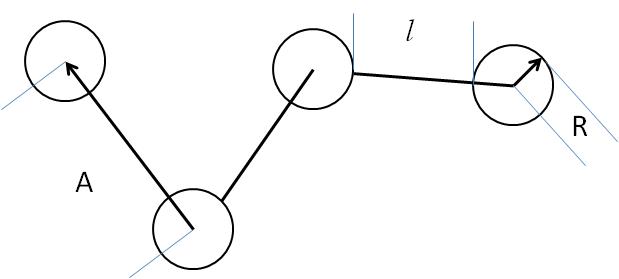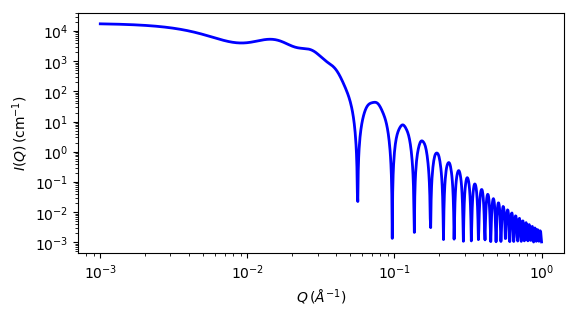pearl_necklace¶
Colloidal spheres chained together with no preferential orientation
Parameter |
Description |
Units |
Default value |
|---|---|---|---|
scale |
Scale factor or Volume fraction |
None |
1 |
background |
Source background |
cm-1 |
0.001 |
radius |
Mean radius of the chained spheres |
Å |
80 |
edge_sep |
Mean separation of chained particles |
Å |
350 |
thick_string |
Thickness of the chain linkage |
Å |
2.5 |
num_pearls |
Number of pearls in the necklace (must be integer) |
none |
3 |
sld |
Scattering length density of the chained spheres |
10-6Å-2 |
1 |
sld_string |
Scattering length density of the chain linkage |
10-6Å-2 |
1 |
sld_solvent |
Scattering length density of the solvent |
10-6Å-2 |
6.3 |
The returned value is scaled to units of cm-1 sr-1, absolute scale.
This model provides the form factor for a pearl necklace composed of two elements: N pearls (homogeneous spheres of radius R) freely jointed by M rods (like strings - with a total mass Mw = M * mr + N * ms, and the string segment length (or edge separation) l (= A - 2R)). A is the center-to-center pearl separation distance.

Fig. 32 Pearl Necklace schematic¶
Definition
The output of the scattering intensity function for the pearl_necklace is given by (Schweins, 2004)
where
where the mass mi is (SLDi - SLDsolvent) * (volume of the N pearls/rods). V is the total volume of the necklace.
Note
num_pearls must be an integer.
The 2D scattering intensity is the same as \(P(q)\) above, regardless of the orientation of the q vector.

Fig. 33 1D plot corresponding to the default parameters of the model.¶
Source
pearl_necklace.py
\(\ \star\ \) pearl_necklace.c
\(\ \star\ \) sas_3j1x_x.c
\(\ \star\ \) sas_Si.c
References
R Schweins and K Huber, Particle Scattering Factor of Pearl Necklace Chains, Macromol. Symp. 211 (2004) 25-42 2004
Onsager, Ann. New York Acad. Sci., 51 (1949) 627-659
Authorship and Verification
Author:
Last Modified by: Andrew Jackson Date: March 28, 2019
Last Reviewed by: Steve King Date: March 28, 2019